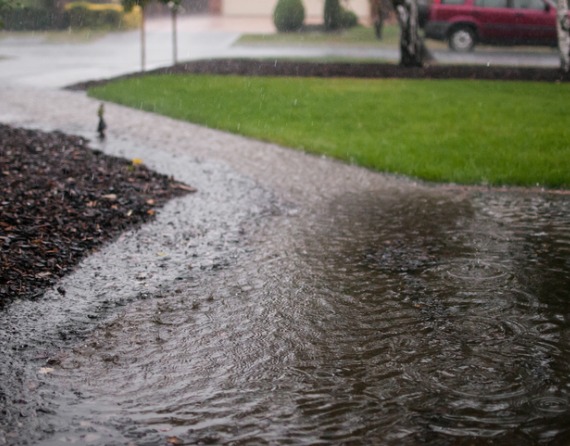
Water is a blessing, but it can also be a curse. In flood plains and areas of low elevation, landowners must continually contend with the risk of runoff overflow and flooding. However, the natural course of gravity means you don’t have much recourse from potential water damage to your property. Moreover, if you’re not careful in redirecting runoff, you could be liable for damage to someone else’s property. Understanding local drainage law is required to know how you can best manage your property’s drainage. Thankfully, Austin Engineering has dealt extensively with drainage and stormwater management throughout the US.
Drainage laws differ from state to state, but the reasoning behind the laws stays mostly the same. Your local drainage laws dictate what can and can’t be done to control runoff water flow onto your property. Furthermore, drainage laws outline where the responsibility lies when water damage occurs due to runoff from one property into another.
Drainage laws are also known as the “natural flow rule.” In other words, it’s a commonly accepted rule that landowners of lower elevation properties are obligated to accept water that flows naturally from higher elevation properties. However, even as the owner of “lower” land, there are actions you can take to safely (and legally) redirect the flow of water.
If facing issues of drainage on your property, drainage law allows for options for the redirection of water. For example, under Illinois law, private landowners have the right to improve their land to manage surface water. Per Illinois drainage law, landowners can:
Overall, if your stormwater management and soil conservation don’t drastically affect or damage other properties, you stay in compliance with local drainage laws. Examples of actions that go against common drainage law include:
If a landowner of lower elevation property yourself, it might seem like you’re left to the whims of nature and gravity. Thankfully, that couldn’t be further from the truth! There are specific property improvements you can make to help protect your land from surface water overflow while abiding by local drainage laws. Such property improvements include:
Ensure you do everything you can to protect your property while abiding by local drainage laws with help from Austin Engineering. Our land development and landscaping experts understand what it takes to keep your land safe and dry all year long.
Or, if interested in Austin Engineering’s other civil engineering, landscape design and property surveying services, contact us today. The first consultation for your proposed project is always free, with no obligation. We presently work with clients throughout the country, with offices in Peoria IL, Davenport IA, and Chattanooga TN.
Illinois:
311 SW Water St, Ste 215, Peoria, IL 61602
Phone: 309-204-0694
Iowa:
220 Emerson Place, Ste 101-A, Davenport, IA 52801
Phone: 563-207-4605
Tennessee:
2115 Stein Dr, Ste 207, Chattanooga, TN 37421
Phone: 423-379-2725